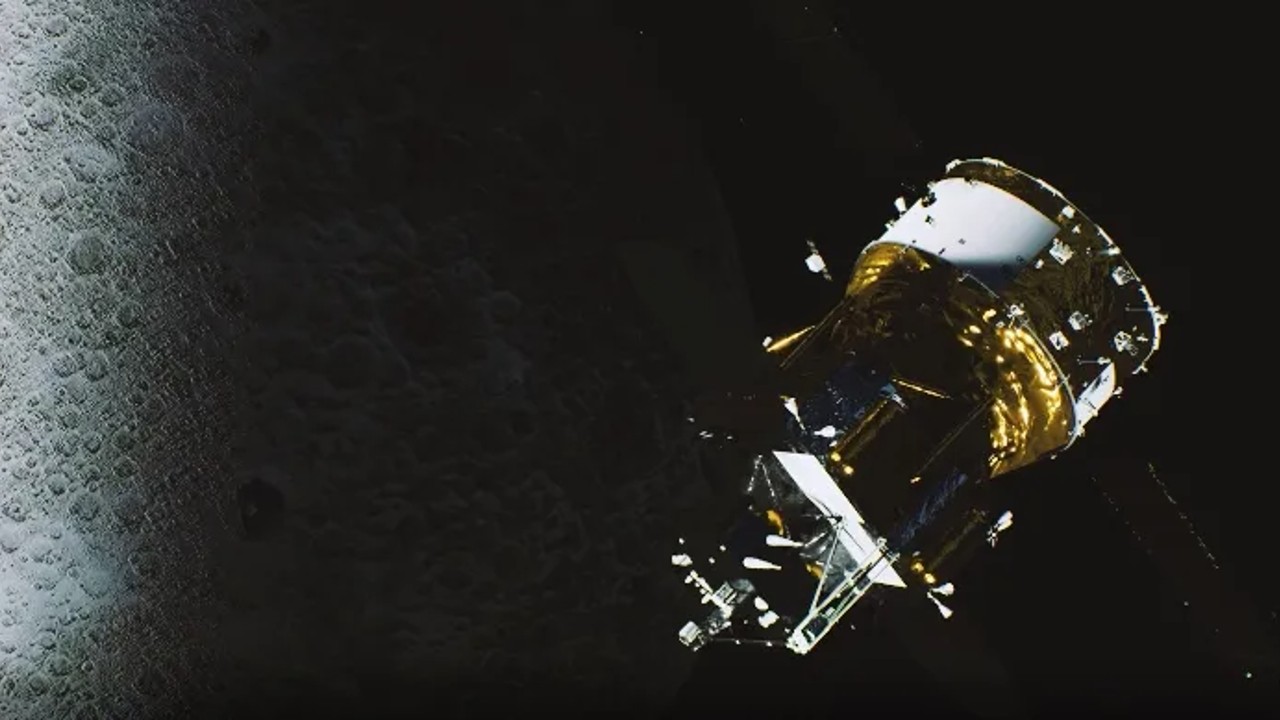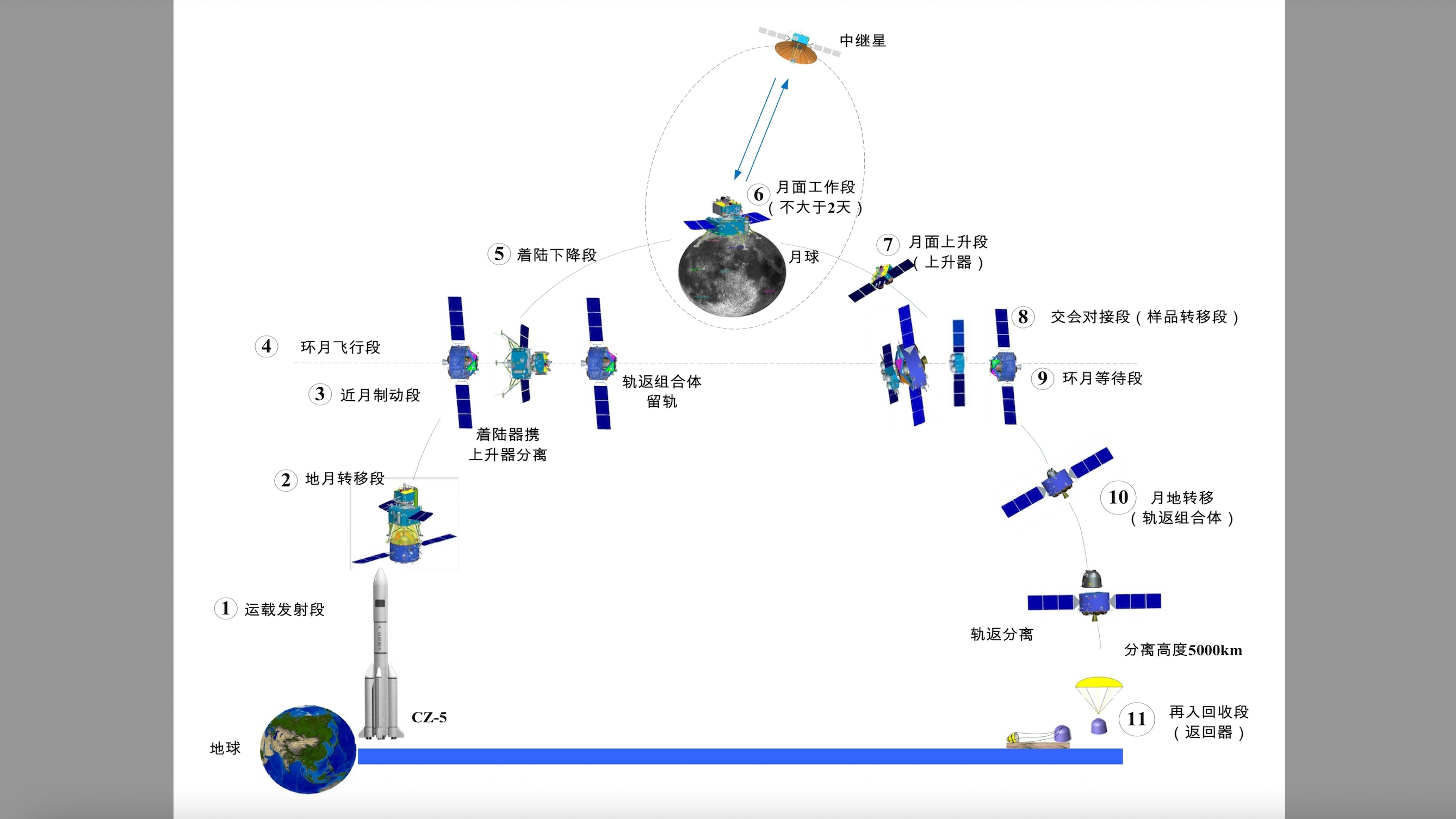
China's most ambitious moon mission yet, Chang'e 6, entered lunar orbit overnight on Tuesday (May 7), setting its sights for a landing on the moon's far side to collect and return samples to Earth.
Chang'e 6 launched May 3 from the Wenchang Space Launch Site in southern China's Hainan province, riding a Long March 5 rocket to orbit and onward to a lunar trajectory. After a five-day transit to Earth's largest satellite, the probe performed an engine burn beginning at 10:12 p.m. EDT, May 7 (0221 GMT, May 8), slowing its momentum enough to be captured by the moon's gravity, the China National Space Administration (CNSA) announced in a release.
If successful, Chang'e 6 will only be the second probe to land on the far side of the moon, and the first mission to return samples from there. Landing on the far side of the moon has only been accomplished once before, by China's Chang'e 4, which brought a lander-rover duo in January 2019.
Related: The latest news about China's space program

The moon is tidally locked to Earth, meaning it has equivalent orbital and rotational periods, causing the same side of the celestial body to constantly face our planet. Because of this, line-of-sight communication with spacecraft on the far side of the moon is impossible without utilizing additional relays.
Now that Chang'e 6 has entered lunar orbit, it will coordinate with China's recently-launched Queqiao 2 relay satellite to perform orbital correction maneuvers ahead of releasing the combined lander and ascent stage from the orbiting probe for their upcoming landing attempt. Chang'e 6 is aiming for Apollo crater, inside the moon's South Pole-Aitken (SPA) basin, where researchers believe samples may contain clues about the moon's early history and evolution.
Assuming a successful landing, Chang'e 6 will collect a targeted 2 kilograms (4.4 pounds) of lunar samples from the surface, as well as material drilled from up to 2 meters (6.5 feet) underground. Those samples will be stowed in the Chang'e 6 lander's ascent module, which will then launch and rendezvous with its probe counterpart in lunar orbit.
The samples will then be relocated to a reentry module on the Chang'e 6 orbiter, designed to protect the lunar material during reentry through Earth's atmosphere, followed by a transfer burn of the probe's engine to set the spacecraft on an Earth-return trajectory.

If all goes according to plan, Chang'e 6's 53-day mission will end with the probe touching down back on Earth with samples from the moon's far side, and mark a major milestone in China's ongoing efforts for lunar exploration. Chang'e 6 is the fifth mission China has launched to the moon since 2018, and is part of an extended effort by the country to land a crew of taikonauts (Chinese astronauts) on the moon by 2030.
This takes place alongside NASA's own lunar ambitions with the United States space agency's Artemis Program, which plans to launch a crew of astronauts around the moon in 2025, on Artemis 2, and to land a crew on the lunar surface on Artemis 3, in 2026. This has sparked comments from U.S. officials about a new "space race," including top NASA administrator Bill Nelson.







